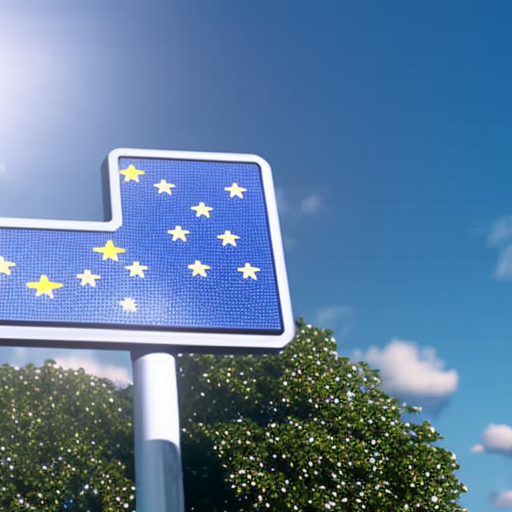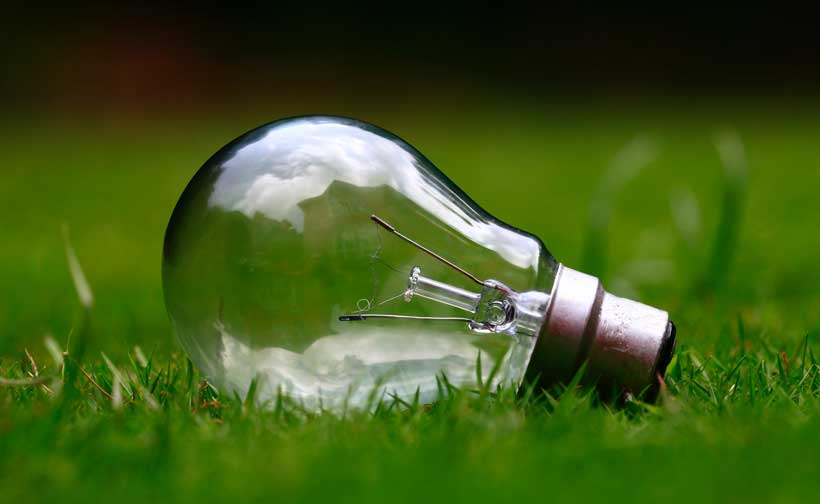
The Strengthened Energy Performance of Buildings Directive: A Step Towards Sustainable Development Goals

The Commission welcomes today’s final adoption of the strengthened Energy Performance of Buildings Directive, another milestone of the European Green Deal. This legislation sets the framework for Member States to reduce emissions and energy use in buildings across the EU, from homes and workplaces to schools, hospitals and other public buildings. This will help improve people’s health and quality of life. The revised Directive sets ambitious targets to reduce the overall energy use of buildings across the EU, taking into account national specificities. It leaves in Member States’ hands which buildings to target and which measures to take. It will boost the demand for clean technologies made in Europe, and create jobs, investment, and growth.
Targets for Energy Efficiency
- Each Member State will adopt its own national trajectory to reduce the average primary energy use of residential buildings, by 16% by 2030 and 20-22% by 2035.
- For non-residential buildings, they will need to renovate the 16% worst-performing buildings by 2030 and the 26% worst-performing buildings by 2033.
- Member States will have the possibility to exempt certain categories of residential and non-residential buildings from these obligations, including historical buildings or holiday homes.
Citizens will be supported in their efforts to improve their homes. The Directive requires the establishment of one-stop shops for advice on building renovation and provisions on public and private financing will make renovation more affordable and feasible.
Transition to Clean Energy
The Directive will boost Europe’s energy independence, in line with the REPowerEU Plan, by reducing our use of imported fossil fuels. The revised Directive will make ‘zero-emissions’ the standard for new buildings. All new residential and non-residential buildings must have zero on-site emissions from fossil fuels, as of 1 January 2028 for publicly-owned buildings and as of 1 January 2030 for all other new buildings, with a possibility for specific exemptions. The strengthened Directive contains new provisions to progressively phase-out fossil fuels from heating in buildings and boost the deployment of solar power installations, taking into account the national circumstances. Member States will also have to ensure that new buildings are ‘solar ready’. Subsidies for the installation of stand-alone boilers powered by fossil fuels will not be allowed as of 1 January 2025. It will also boost the uptake of sustainable mobility thanks to provisions on pre-cabling, recharging points for electric vehicles, and bicycle parking spaces.
Fighting Energy Poverty and Promoting Renovation
Better planning of renovations and technical and financial support will be crucial to trigger a Renovation Wave across the EU, and this is foreseen under the revised Directive. To fight energy poverty and bring down energy bills, financing measures will have to incentivise and accompany renovations and be targeted in particular at vulnerable customers and worst-performing buildings, in which a higher share of energy-poor households live.
Next Steps
The revised Directive will be published in the Official Journal of the Union and enter into force in the coming weeks. Member States will then have to transpose it into their national legislation.
Background
Buildings are responsible for around 40% of the EU’s energy consumption, more than half of EU gas consumption (mainly through heating, cooling and domestic hot water), and 35% of the energy-related greenhouse gas emissions. At present, about 35% of the EU’s buildings are over 50 years old and almost 75% of the building stock is energy inefficient. At the same time, the average annual energy renovation rate is only about 1%.
In 2020, the Commission presented its Renovation Wave Strategy to at least double renovation rates by 2030 and to make sure that renovations lead to higher energy efficiency and more renewables in buildings. The Commission’s proposal to revise the EPBD in December 2021 was further supplemented by additional elements on the deployment of solar energy on buildings as part of the REPowerEU plan in May 2022. The co-legislators reached a political agreement in December 2023.
The Directive is a key building block in the EU’s efforts to transition away from fossil fuels and to double the rate of energy efficiency improvements and triple renewable energy capacity by 2030, as agreed with global partners at COP28. Today’s adoption builds on the completion and entry into force of the “Fit for 55” legislation, and will contribute to reducing greenhouse gas emissions by at least 55% by 2030.
SDGs, Targets, and Indicators in the Article
1. Which SDGs are addressed or connected to the issues highlighted in the article?
- SDG 7: Affordable and Clean Energy
- SDG 9: Industry, Innovation, and Infrastructure
- SDG 11: Sustainable Cities and Communities
- SDG 13: Climate Action
2. What specific targets under those SDGs can be identified based on the article’s content?
- Target 7.3: By 2030, double the global rate of improvement in energy efficiency
- Target 9.4: Upgrade infrastructure and retrofit industries to make them sustainable, with increased resource-use efficiency and greater adoption of clean and environmentally sound technologies and industrial processes
- Target 11.4: Strengthen efforts to protect and safeguard the world’s cultural and natural heritage
- Target 13.2: Integrate climate change measures into national policies, strategies, and planning
3. Are there any indicators mentioned or implied in the article that can be used to measure progress towards the identified targets?
- Indicator 7.3.1: Energy intensity measured in terms of primary energy and GDP
- Indicator 9.4.1: CO2 emissions per unit of value added
- Indicator 11.4.1: Total expenditure (public and private) on the conservation, protection, and restoration of cultural and natural heritage
- Indicator 13.2.1: Number of countries that have integrated mitigation, adaptation, impact reduction, and early warning measures into their national policies, strategies, and planning
Table: SDGs, Targets, and Indicators
| SDGs | Targets | Indicators |
|---|---|---|
| SDG 7: Affordable and Clean Energy | Target 7.3: By 2030, double the global rate of improvement in energy efficiency | Indicator 7.3.1: Energy intensity measured in terms of primary energy and GDP |
| SDG 9: Industry, Innovation, and Infrastructure | Target 9.4: Upgrade infrastructure and retrofit industries to make them sustainable, with increased resource-use efficiency and greater adoption of clean and environmentally sound technologies and industrial processes | Indicator 9.4.1: CO2 emissions per unit of value added |
| SDG 11: Sustainable Cities and Communities | Target 11.4: Strengthen efforts to protect and safeguard the world’s cultural and natural heritage | Indicator 11.4.1: Total expenditure (public and private) on the conservation, protection, and restoration of cultural and natural heritage |
| SDG 13: Climate Action | Target 13.2: Integrate climate change measures into national policies, strategies, and planning | Indicator 13.2.1: Number of countries that have integrated mitigation, adaptation, impact reduction, and early warning measures into their national policies, strategies, and planning |
Explanation:
The article discusses the adoption of the strengthened Energy Performance of Buildings Directive, which is a milestone of the European Green Deal. The issues highlighted in the article are related to reducing emissions and energy use in buildings, improving people’s health and quality of life, boosting clean technologies, creating jobs and investment, and promoting sustainable mobility. These issues are connected to several SDGs, including SDG 7 (Affordable and Clean Energy), SDG 9 (Industry, Innovation, and Infrastructure), SDG 11 (Sustainable Cities and Communities), and SDG 13 (Climate Action).
Based on the article’s content, specific targets can be identified under these SDGs. For example, Target 7.3 aims to double the global rate of improvement in energy efficiency by 2030. Target 9.4 focuses on upgrading infrastructure and retrofitting industries to make them sustainable. Target 11.4 aims to strengthen efforts to protect and safeguard cultural and natural heritage. Target 13.2 aims to integrate climate change measures into national policies, strategies, and planning.
The article also mentions or implies indicators that can be used to measure progress towards these targets. For example, Indicator 7.3.1 measures energy intensity in terms of primary energy and GDP to assess improvements in energy efficiency. Indicator 9.4.1 measures CO2 emissions per unit of value added to evaluate the sustainability of industries. Indicator 11.4.1 measures the total expenditure on the conservation, protection, and restoration of cultural and natural heritage to monitor efforts in safeguarding these resources. Indicator 13.2.1 measures the number of countries that have integrated climate change measures into their policies, strategies, and planning to assess progress in addressing climate change.
Behold! This splendid article springs forth from the wellspring of knowledge, shaped by a wondrous proprietary AI technology that delved into a vast ocean of data, illuminating the path towards the Sustainable Development Goals. Remember that all rights are reserved by SDG Investors LLC, empowering us to champion progress together.
Source: moderndiplomacy.eu

Join us, as fellow seekers of change, on a transformative journey at https://sdgtalks.ai/welcome, where you can become a member and actively contribute to shaping a brighter future.






